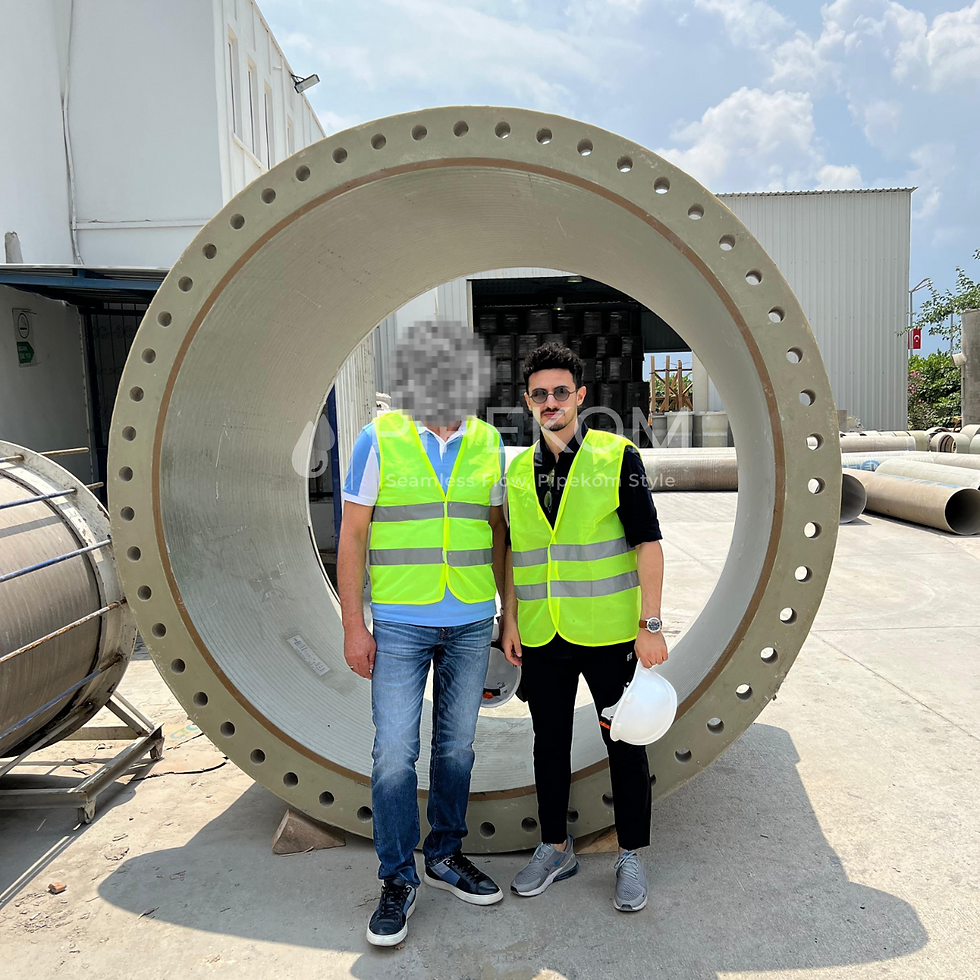🏗 The Hidden Cost of Low-Grade Pipes: Why Quality Matters in Critical Infrastructure
- Pipekom

- Jul 23
- 2 min read
Introduction
In large-scale infrastructure projects, pipelines represent more than just material supply — they are the lifelines of water, energy, and utility networks. While upfront cost savings may tempt some buyers toward low-grade or non-compliant pipe sources, the long-term operational and reputational risks are significant.
This article highlights the technical, financial, and strategic consequences of using substandard pipes, with a focus on ductile iron and welded steel applications.
1. 🔧 Failure Risk in Critical Systems
Pipes that do not meet international standards — such as AWWA C151, ISO 2531, or API 5L — often suffer from:
Inadequate tensile strength or wall thickness
Poor-quality coatings and linings
Unverified pressure and impact tolerances
Such deficiencies increase the likelihood of:
Premature corrosion or cracking
Structural fatigue under surge pressures
Leakage at joints and fittings
📉 Studies show non-compliant materials have a 2–5× higher failure rate in pressurized and corrosive environments.
2. 🌍 Operational Disruptions & Environmental Risk
The consequences of failure extend far beyond material replacement:
Downtime for water treatment or district cooling systems
Flooding or contamination in urban environments
Fines and compliance breaches under national water authorities or municipalities
Loss of public trust in government or EPC contractors
🔎 For water utilities, NRW (Non-Revenue Water) caused by leakage can exceed 30%, with aging or low-grade pipes being a major contributor.
3. 💸 Total Lifecycle Cost vs. Initial Cost
While low-cost pipe suppliers may offer short-term savings, the lifecycle cost — including repairs, inspections, unplanned shutdowns, and replacements — can be significantly higher.
🧮 A 5% saving on material cost may result in 30–50% increase in O&M (Operations & Maintenance) costs over 10 years.
4. ✅ How to Ensure Pipe Reliability
When sourcing ductile iron or welded steel pipes for major projects, engineers and procurement managers should:
Verify compliance with AWWA, EN, ISO, API standards
Request 3rd-party test reports and material traceability
Ensure coating systems are suitable for the intended medium and soil class
Confirm long-term supply capacity and export documentation quality
5. 🚛 Pipekom: Reliable Supply Partner for MENA & Africa Projects
Pipekom supports contractors, developers, and municipalities with:
💼 Certified Ductile Iron & Welded Steel Pipes
🛡 Advanced coatings and linings (cement mortar, epoxy, bitumen)
🔍 Independent inspection (SGS/BV) + full documentation
📦 Delivery to major project hubs: Saudi Arabia, Egypt, Iraq, Libya, Algeria, Tanzania, and more
Let’s discuss how to ensure the reliability of your next pipeline project.
📩 Contact: info@pipekom.com🌐 pipekom.com


